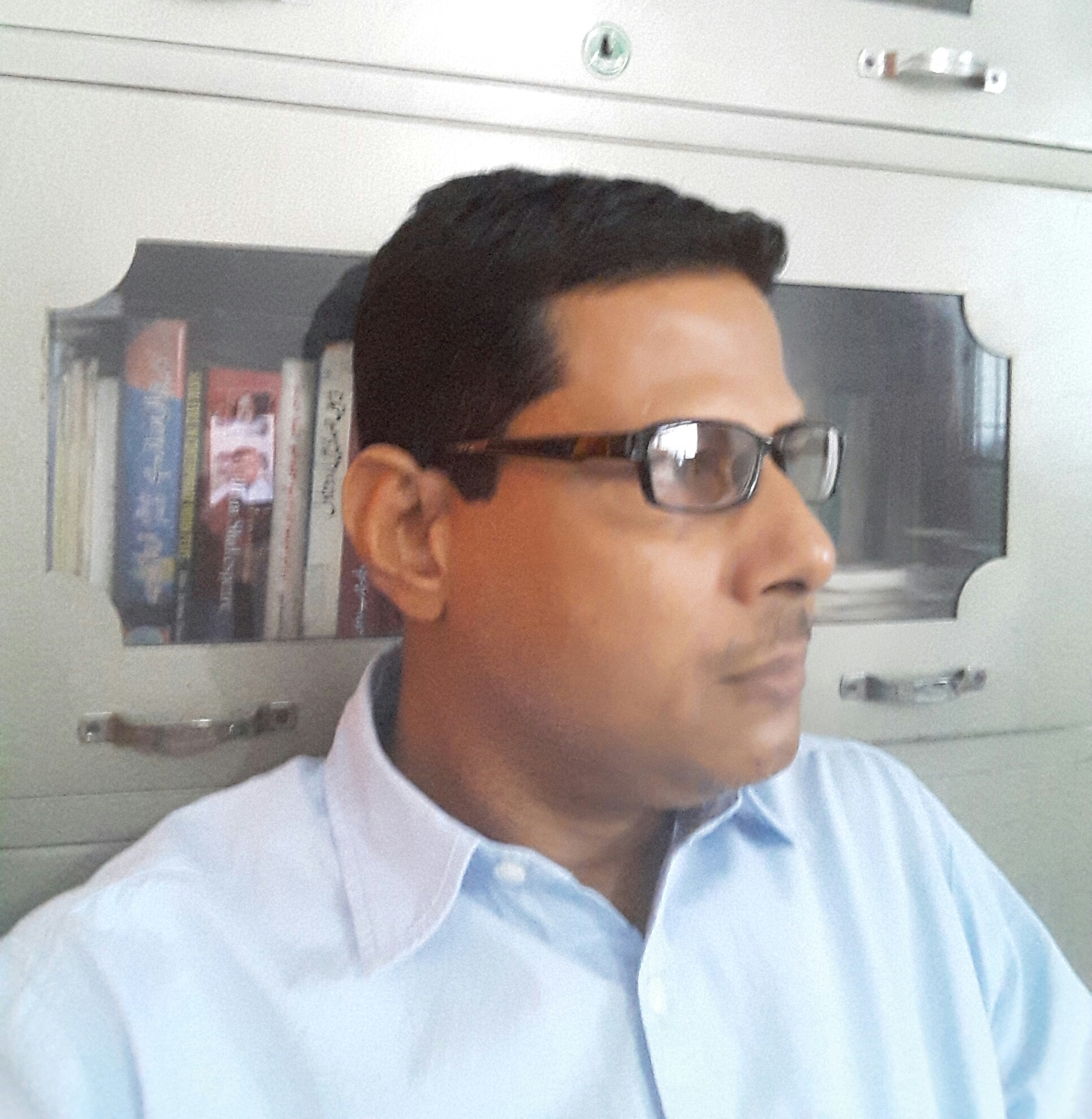
Nayyar Masood and his stories
by, Meraj Rana
Reverential criticism in Urdu begins with Maulana Muhammad Hussain Azad’s book Aab-e-Hayat. Though Maulana was a well-educated man yet he was quick to correct the objections raised against him. Aab-e-Hayat thus gives rise to many kinds of lies, but one of the greatest innovations among them is the absence of a study on the basis of which a comparison between “Zauq” (ذوق) and “Khaqani” (خاقانی) is established.
While the truth is that there is no other artistic value in these two poets except that they were both poets of Qasida (قصیدہ). But when a new method of study was introduced in the field of research after the establishment of large universities in India, some idols began to break down on their own.
In the masses of opinions, such an opinion was considered worthy, which was based on knowledge in spite of devotion. Obviously, this knowledge was influenced by the writings of many people like Maulana on whom it is not intended to be discussed here but to be mentioned.
It is said that the inappropriate attitude of Maulana’s Aab-e-Hayat, which had become extinct, has started to become common again in Urdu. That is to say, a new trend of faith has become common in Urdu criticism in the last twenty years. According to this trend, if a critic calls a novel or a story big or important, then the whole Urdu academia begins to consider it as big or important.
It cannot be said here that it can be applied to every opinion. Some novels or stories really have such artistic qualities that we are forced to accept the critic’s opinion with the utmost devotion and respect. And this is because the critics here encourage us to read and understand. This kind of opinion is not just an opinion given in the space, but the opinion given on the subject under study is based on scientific argument which is rarely seen in today’s Urdu critical writings.
Therefore, a kind of uniformity here raises a number of obstacles to the birth and growth of the brilliant reader. The result is that we begin to advertise what the critics have said as authentic. The extreme of advertising establishes credentials, but this certification is so weak that if a light blow of knowledge and logic is applied to it, it immediately disintegrates.
There are so many artists in Urdu who are considered unnecessarily important. Nayyar Masood is also a story writer of the same type. Unjustifiably a certification was made about him which is of a purely reverential nature as opposed to critical insight.
Nayyar Masood’s creative peak is the zenith of modernity, so the process of discovering modern trends in his story seems somewhat natural. Probably a factor as to why he is doing so poorly in the early days of his fictional discourse. And this is because Nayyar Masood did not have a coherent story or fable line, and more or less this element seems to be missing in his later stories as well.
The same non-existence of the later story, on the one hand, served as the author’s shortcomings, and on the other hand, it also created critics of fiction in Urdu who based their criticism on conscience as opposed to knowledge.
The raw material for this faith-based criticism was Nayyar Masood’s stories. Whether one admits it or not, the fact remains that in most of Nayyar Masood’s stories, understanding them is a major issue. And this issue is not the result of the author’s unconscious effort.
Nayyar Masood was unable to formulate any new fictional poetics in the name of newness just as Manto, Bedi, Krishna Chandra and Ismat Chughtai, through their fictions, have created a new poetics on which a large and colourful world of modern fiction is inhabited.
Some people think that Nayyar Masood is the only writer of his style because he introduced a narrative between symbols and metaphors in Urdu in which language is like a gallery. But when this is said, the question arises unintentionally as to whether a fiction can be characterised by all the attributes that distinguish it from a good fiction simply by the charm of language.
Obviously, this question cannot be answered in the affirmative despite many efforts, because the greatness of any creation is not determined by fiction alone on the basis of language. There is an example of Ghalib (غالب) and Dagh (داغ) in Urdu itself.
The charm of language in the poetry of Dagh is not present in the poetry of Ghalib but the poetry of Dagh cannot reach the height of meaning which is present in the poetry of Ghalib.This means that apart from language, there are many other things that exalt a creation with the abundance of luxuries that inhabit an infinite world of meaning within the creation.
When this is said, the question arises as to whether the magic of language does not exist in the story of Manto, Qurratulain Hayder and Surendra Prakash?
But these fiction writers are not only privileged because they use heart-wrenching language. The name of Intezar Hussain is also of special importance in this skill. He suddenly turns the old story into a modern one by adding two or four sentences while retelling the old stories of Urdu and Persian. And then that old story, without any narrative references, reconciles us with contemporary issues and their meaning.
It is not just “intertextuality” but to create a metaphor of the present age from the dust of the ancient age. Even in Surendra Prakash’s story Bazgoi, Malika Shabrozi (ملکہ شبروزی) is the dust of the past from which Surendra Prakash symbolises the power. That is why this central character of Bazgoi (بازگوئی) becomes representative of many important women political leaders.
There is nothing wrong with saying that Nayyar Masood does not have stories that we can relate to contemporary issues. Although they have the same arrangement of atmosphere and details that is found in Intezar Hussain and Surendra Parkash, the irrelevant attitude of the story does not allow him to come from the world of mystery to the world of expression.
Therefore, these fictional environments and the protagonists of this environment do not become references to any contemporary issue. A great feature of the big story is the creation of meaning.
Nayyar Masood’s most famous collection is Taus Chaman Ki Maina (طاؤس چمن کی مینا) and for this collection he was also awarded with Sahitya Academy. When this award was received, some reverential critics of Urdu academia considered his book in general and story Taus Chaman ki Maina in particular as a masterpiece of Nayyar Masood. But the funny thing is that this understanding was limited to oral tradition only. It is also worth noting here that there was no one among the reverential critics who, without talking about Iran and Tehran, has determined and discussed his fictional points in detail.
After reading any of Nayyar Masood’s stories, there is no difference between the story and the plot. Therefore, in spite of all the beautification of language in the subject matter described here, not a single coherent story makes sense. Some people think that this is the essence of his story. Such people also support the idea that this is a new thing in Urdu fiction which is both difficult and incomprehensible.
A new fictional poetics is needed to read and understand it. This means that we cannot read and understand Nayyar Masood with reference to the poetics according to which we read and understand the fictions of the past.
It is a wonder that the whole issue of determining the value of a fiction is based on the needlessness of the story or it can be said that the emergence of that poetics has not yet been possible in the light of which the virtue of Nayyar Masood’s stories could be determined.
This is more or less the case with the famous modern English critic and poet T.S. Eliot’s famous poem The Waste Land, published in 1922, the same questions were raised about his difficult-mindedness and unfamiliar manner of expression that are being raised today in Nayyar Masood’s stories.
But there is a big difference between the two and that is Eliot insisted on reading J.G.Frazer’s book Golden Bough to solve the problem of misunderstanding of his poem, after which the problem of understanding of his poem was solved. The result is before us today. That is to say, Eliot’s The Wasteland is recognised today as an important poem in English literature.
Fifty years after the fictional life of Nayyar Masood, no poetics or principles have been formulated that can solve his fictional entanglement.
It is also worth remembering here that Nayyar Masood in his entire creative life has never been like Eliot or Miraji (میراجی) in defending his difficulties. When this is said, it does not necessarily mean that his fictional writing has no value. Undoubtedly, the language is prominent here with all its beauty, the precedent of which is rarely seen among his contemporaries. But the fact remains that in his case, the language seems more active and dynamic in the expression of sketches and details than in the creation of story.
The structural rarity of the sentences sometimes lead to a tour of the desert. But that doesn’t help in crafting of fiction. This means that fiction or any of its characters do not get their growth from these verbal methods, so they are often probably a factor as to why he is doing so poorly.This means that the mental qualities of the character do not appear in this sentence.
The fictional narrative of Anwar Sajjad’s story Sujware (سجوارے) can be seen
“The hearts of the virgins who begin to dance to the beat of the drum cannot break the chains of flowers lying at their feet.”
Here, too, a statement has been created from the paradox that amazes the reader for a long time. The purpose here is not to compare Nayyar Masood and Anwar Sajjad, but to say that such a statement cannot be effective unless the mental state of the character is formed through it. This statement by Anwar Sajjad not only creates an atmosphere of confusion but also highlights the mental conflict of the characters in the story.
The mystery of the inner world is evident in the mystery of most of Nayyar Masood’s stories, which may be the personal mystery of the author. Therefore, there is no gap between the character and the author. One of the major errors in Nayyar Masood is that he forgets what a character said at the beginning of the story or what the author or any other character said about it.
Obviously, this kind of forgetfulness will affect the craft of story. And we also know that when the structure of a story is loose, even if the magic of language is not at its point of perfection, it will be natural for the communication system to stagnate.
Any logic of Nayyar Masood like Shisha Ghat or Itr-e-Kafoor should be picked up, the logic of its basic structure is “a man married a girl. He is fired from his job. On the third day, the girl falls ill. When her husband goes to the doctor’s clinic to fetch her medicine, he falls in love with the doctor’s beautiful girl.
In any story, this logic may also be the fabric of the story. The author’s job was to write, so he wrote. Now it is your responsibility how you understand this logic and explain it to others.
In the case of Nayyar Masood, fiction becomes either a riddle or a mystery.
There are many people who recognise him as the inventor of a new style in Urdu fiction. Kafka is also a renaissance of a new style in English fiction, but Gregor Samsa’s caricature in Metamorphosis does not tell a riddle but laments the human transformation.
Making personal grief a metaphor for the grief of an era is the epitome of Kafka’s art. And this ascension is seen in very few Urdu fiction writers. Nayyar Masood’s fictional prose contains everything that is in a high level prose, but that prose is incapable of the appearance of a coherent and compact plot.
Nayyar Masood made the same creative demonstration of his language and details in the form of fiction as Maulana Abul Kalam (مولانا ابو الکلام آزاد) Azad did in the form of a letter. Ghubar-e-Khatir (غبار خاطر) is just a letter. But in fact all of the topics of Ghubaar-e-Khatir are the subjects of research articles.
There are many important fiction writers in Urdu who, like Nayyar Masood, have a fictional atmosphere and enchantment of details, but they do not just create puzzles about these things, but they create the plot. In this regard, the example of Khaleda Hussain and Zahida Hina is very obvious.
Regardless of all of Khaleda Hussain’s stories, if only one of her stories, Sawari, is taken into account, her stinking atmosphere and the mystery inside the covered cart create a scenario of fear as opposed to a mental complication from the inner life of man.
Here, the non-expressive scene inside the cover describes everything that is behind the story, but not beyond the author’s intent. Therefore, there is the same state of unity of impression that is the artistic distinction between English and modern French fiction. Who can forget Maupassant’s story Necklace. Contrary to complicated philosophy, fabricating a story based on illusions and sense of wisdom is a miracle of Maupassant that makes Matilda not just a character but a layered symbol of suffering. If you want to see the details of Zahida Hina, just read her story Raqs-e-Maqabir. Here, too, the unnatural psyche of an Afghan child, like Kafka, has been instinctively adapted to the external situation.
It is not that Nayyar Masood has not been tried by serious critics of Urdu. In this regard, there is an example of the articles of Shafey Kidwai and Nasir Abbas Nayyar which belong to the prose of Nayyar Masood.
The articles of both the critics are not enviable in the sense that these two articles have been written from a post-structural and structural point of view but because in them we find the scientific and logical world of text. And which confirms the meaning of Nayyar Masood.
The logical argument of these articles is in place, but the discovery of the disappearance of the story is not possible here either. And it was not even possible because here the critics have engaged themselves in highlighting the prose of Nayyar Masood through an analytical philosophy. Therefore, from these articles, the structural thought of Nayyar Masood’s prose has been well explained in a rational manner.
The conclusion from this brief discussion is that there is no complete plot in Nayyar Masood’s fiction as a whole. Maybe it’s my lack of knowledge.


